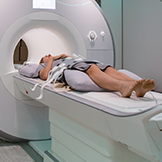
Patients with back and neck pain frequently ask their doctor if they need an MRI scan to diagnose and treat their problem. Their doctors answer “no” for most of these cases. There are many reasons why their doctors should not make MRIs a routine order.
Most importantly, research has shown that MRIs do not improve the outcomes for the majority of patients.
Back pain is a very common condition, and in most instances is benign and self-limited. Simple treatments such as heat, over-the-counter anti-inflammatories, and an exercise program will often lead to quicker recoveries from back pain than MRI studies can provide.
In addition, MRI scans are very sensitive. They show fine details of the body’s deep tissues including the discs, bones, and nerves of the spine. These studies often reveal changes in the spine that are natural and age-related. MRIs reveal disc degeneration in 20 percent of 20-year-olds, 40 percent of 40-year-olds, and more than 80 percent of patients over 60 who do not have any back pain.
Disc herniations and spinal stenosis are also frequently seen in asymptomatic patients on MRI scans. MRIs can over-diagnose back problems and may lead to invasive and often unnecessary treatment.
The use of MRI should be limited to cases with clear warning signs such as weakness in the extremities, history of cancer, fevers, infection or loss of bowel or bladder control. An MRI can often detect serious conditions that require emergency surgery. Without these red flags, an MRI can be considered if symptoms persist for at least six weeks despite treatment.
The MOSH spine specialists are trained to provide accurate diagnoses and treatments for and can determine whether an MRI will be helpful or not. Contact your doctor to discuss the right path for you.